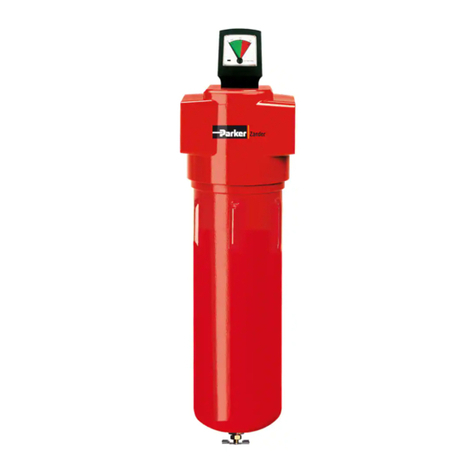
8 TG-Filter_EN_01—2016
Notes on transportation and storage
The transportation — in particular of larger build type filters — may be carried
out by specialist personnel only.
Filters damaged during transportation must not be installed.
Store filters, filter elements and cartridges in the unopened original packing in
a clean, dry place until they are used.
Notes on filter operation
Do not perform any unapproved conversions and modifications on the filters.
Non-approved modifications will endanger the operational safety and may
cause damage or personal injury.
For ATEX-compliant filters:
—Filters for explosive gases as per ATEX must be earthed. Establish an
appropriate local equipotential bonding. Test and document the
conductivity.
—For installation under explosion group IIC:
Make sure when attaching decals or other markings that the area they
cover does not exceed a total contiguous area of 20 cm2!
—Make sure when painting that the permissible coat thickness does not
exceed the limits stipulated for the area of application.
—The control of electronic accessories for ATEX-compliant filters must be
intrinsically safe.
Avoid sudden pressure fluctuations on pressure build-up and de-
pressurization. If the pressure builds up or drops, too quickly, this may cause
damage to the filter.
When using accessories with an external power supply, there is a hazard
from electrical voltage. Heed the notes given in the operating instructions for
the accessories. Work on electrical components only when they are
deenergised.
Notes on maintenance
Always maintain the prescribed service intervals. If these are not complied
with, the filter may not function correctly and the manufacturer does not
accept any liability whatever for any possible consequences.
Repairs and maintenance should be carried out by specialist personnel only.
Use only suitable tools when working in an explosive environment.
Notes on disassembly and disposal
Flush the entire system, including the filter, with inert gas before
disassembling filters used for filtering critical gases. Depressurise and
disassemble the filter only then.
The filter housing and elements might be contaminated by substances held
back in the filter. Filters used for the filtering of critical gases might contain
explosive, flammable or poisonous substances. Therefore always read the
material safety data sheet of the respective gas. Dispose of all components
of the filter according to the applicable statutory regulations.





























